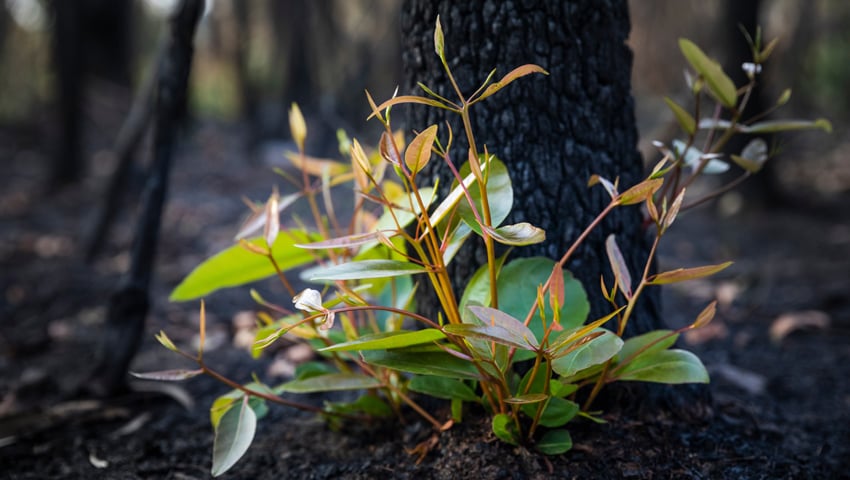Warmer and drier climate conditions in western US forests are making it less likely that trees can regenerate after wildfires, according to new research published in the Proceedings of the National Academy of Sciences.
Importantly, the research also finds that ecologically-based forest management can partially offset climate-driven declines in tree regeneration by limiting fire-caused tree death, but only if action is taken quickly.
The climate change challenge
Forests are adapted to different types of fire across the west of the USA, but hotter and drier conditions in recent decades have intensified the way fires burn, resulting in more trees being killed. All of this can result in fewer seeds available for forests to regenerate after wildfires. Even when seeds are available, a warming climate is increasingly limiting the chances that seedlings can establish and grow.
“Climate change increasingly limits tree establishment after wildfires because seedlings can be killed by hot temperatures and dry conditions,” said the study’s lead author, Kim Davis, who completed the study at the University of Montana and is now a research ecologist for the Forest Service at the Missoula Fire Sciences Laboratory.
The research examined how the severity of a fire – the number of trees it kills – in combination with the climate conditions after the fire affected the chances of tree seedlings regenerating to establish a new forest. It is the most extensive study to date, assessing regeneration of eight major tree conifer species after 334 wildfires across the west, using information from over 10,000 field plots collected by more than 50 research teams.
Researchers found that warmer, drier conditions over the past four decades have led to a decline in tree regeneration after wildfires and this trend is expected to accelerate in the future. For example, from 1981-2000, 95 per cent of the areas studied had climate conditions suitable for tree regeneration after wildfires, but this is projected to decrease to only three-quarters of the west by 2050 under future climate scenarios.
The most vulnerable forests were in drier regions in the Southwest and California, while forests in the wetter and cooler regions of the northern Rocky Mountains and Pacific Northwest are still expected to support conifer regeneration in the near-term future.
Philip Higuera, a co-author and professor of fire ecology at the University of Montana, said, “The impacts of climate change and wildfires vary across the west, and the large scope of this study allowed us to highlight where these changes are most concentrated and happening first.”
Ecological Forest Management Can Reduce Risk
The study also found that ecological forest management in vulnerable dry forests could offset climate-driven changes by reducing the number of trees killed in wildfires. Specifically, in almost half of the study region, regeneration after wildfires is projected to be likely only if future fires burn at lower severities because fewer trees that produce seeds needed for forest recovery are killed in these fires.
“We know from prior research that forest thinning and controlled burns in overgrown dry forests effectively reduces fire severity and subsequent tree death,” said study co-author Marcos Robles, lead scientist for The Nature Conservancy in Arizona. “Land managers can’t do much about drought and climate change in the short term, but they can reduce the area in which forests are vulnerable to severe wildfires by accelerating ecological based forest management.”
Prior research published by The Nature Conservancy demonstrates that ecological forest management in a large restoration initiative in Arizona would not only reduce wildfire-cased tree death, but also provide additional co-benefits, including significant reductions in drought-related tree death, while increasing carbon storage, stream flow and tree growth.
“But the clock is ticking. It’s urgent that we implement these treatments in our forests now, lest we lose them altogether,” said Robles.
Even in cooler high-elevation forests in the Rocky Mountains and Pacific Northwest that experienced large tree-killing wildfires in the past, the researchers also found that climate change is making it less likely for trees to regenerate after wildfire. In these forests, planting trees after wildfire may take on increased urgency, given a shortening window of opportunity for trees to establish in climate conditions that are warmer and drier than in the past.
